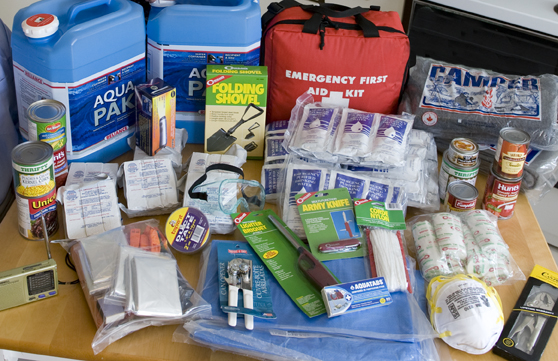Create an emergency Plan
Steps to take in creating a household emergency plan include:
- Schedule a family meeting to discuss the dangers of possible emergency events including fire, severe weather, hazardous spills and terrorism.
- Discuss how you and your family will respond to each possible emergency.
Discuss what to do in case of power outages or personal injuries. - Draw a floor plan of your home and mark two escape routes from each room.
Because it is often easier to call long distance during an emergency than within the affected area, choose an out-of-state friend or relative whom all family members will call if separated during an emergency. - Pick two meeting places – one near your home and one outside your neighborhood in case you cannot return home after an emergency.
- Keep family records in a water- and fireproof safe. Inexpensive models can be purchased at most hardware stores.
Watches and Warnings
Oklahomans are reminded that tornadoes can occur any time of year. Knowing the difference between watches and warnings can help save lives.
A TORNADO WATCH means tornadoes are possible.
A TORNADO WARNING means a tornado has been sighted.
When a TORNADO WARNING is issued, take shelter in a basement, away from windows. If there is no basement, go to an interior room, like a closet, on the ground floor.
Prepare a Disaster Supply Kit
Electricity, water, heat, air conditioning or telephone service may not work in an emergency. Preparing disaster supply kits in advance can save precious time in the event you must evacuate or go without utilities for an extended period.
Store items for a “go” kit in an easy-to-carry bag and keep in a car or in the garage. The “home” kit can be stored in a plastic tub or garbage can and kept in your home’s safest place where you will take shelter.
Consider including the following items when putting together your disaster supply kit:
- At least a 3-day supply of water (1 gallon per person per day). Store water in sealed, unbreakable containers. Replace every 6 months.
- A 3- to 5-day supply of nonperishable packaged or canned food and a non-electric can opener.
A change of clothing, rain gear and sturdy shoes. - Blankets, bedding or sleeping bags.
A first aid kit and prescription medications (be sure to check expiration dates). - An extra pair of glasses or contact lenses and solution.
- Special items for infants, the elderly or family members with disabilities.
- A battery-powered radio, a flashlight and extra batteries.
Identify Your Safest Place at Home, Work
Before an emergency strikes, take time to identify your safest place at home, at work and at school. Many people have survived strong tornadoes in a closet or small interior room without windows. Usually the safest place will be on the lowest floor. If you live in a mobile home, identify the nearest sturdy building – it may not be safe to remain in a mobile home during a storm.
At schools, offices and hospitals, preparedness plans are especially important due to the large number of people on hand and the large amount of glass at many sites. Know the safest place for you to shelter in place and make sure others know their assigned location as well. At shopping malls, indoor pools and gymnasiums, long spanning buildings are commonly found. These locations can be dangerous because the entire roof can been supported by the outside walls. If caught in such an open building, the restroom may be the best place to take shelter.
If possible, one of the best ways to prepare for survival in Tornado Alley states like Oklahoma is to build or install a SafeRoom in your home or workplace. Your local emergency manager or homebuilders association will have information about SafeRooms. Plan how to get to your safest place, and share the information with your family.
View this information as an infographic
After the Storm
Once severe weather has passed, be prepared for possible flooding to occur. Also, watch for downed power lines and never drive into high water.

